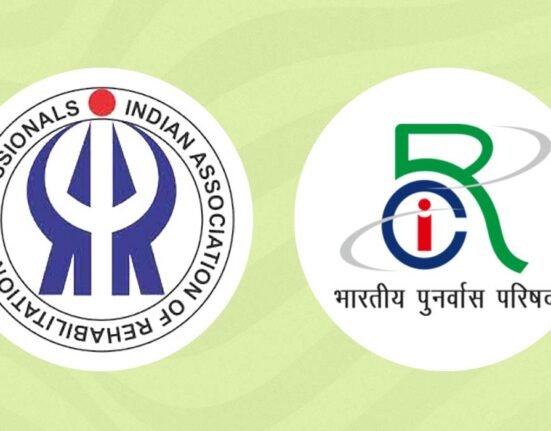Chronic diseases, especially noncommunicable diseases (NCDs), weigh heavily on India’s labour force. NCDs account for roughly 60% of national mortality, affecting economic productivity and health systems. The major causes of NCD-related mortality are cardiovascular diseases, cancer, chronic respiratory diseases, and diabetes, resulting in numerous premature deaths.
Urbanisation, lifestyles, work stress, and the absence of preventive healthcare worsen it, affecting organisational performance. Employers know that management of chronic conditions is the foundation for maintaining productivity and reducing absenteeism costs. There is an urgent need for whole-of-strategy responses to workforce health challenges. As quoted by Sinha & Pati (2017), India’s healthcare system lacks the needed primary care facilities for proper management of chronic diseases. Thus, solving these problems requires strong healthcare programs and employer commitment to their employees’ well-being.
Read More: 7 Ways Organizational Psychologists Boost Workplace Productivity
Significance to Employers
The increasing prevalence of chronic conditions among working people in India poses severe challenges for employers. Diabetes, high blood pressure, and mental disease, among others, not only jeopardise worker health but also affect organisational performance and productivity directly. With these conditions equating to higher absenteeism rates and reduced productivity, organisations have no option but to consider the economic ramifications of increased healthcare costs and the potential for loss of experienced workers.
In addition, shifting worker expectations for on-the-job health benefits bring a vital imperative for organisations to enact effective wellness programs. Treating chronic illness has evolved from simple regulatory compliance; it is now a strategic imperative that enhances employee retention, participation, and overall morale. As per Ganguli & Poddar (2025), employers who make investments in advanced health schemes are likely to have higher levels of workplace engagement among their staff, which will ultimately result in improved business performance.
Read More: Workplace Cliques and Their Role in Office Culture
Plum Employee Health Report 2025 Highlights
1. Decline in Median Age of Diagnosis
The median age at which Indian workers get diagnosed with chronic diseases has sharply declined, indicating an alarming trend in health outcomes. Statistics indicate that NCDs are surfacing at an early age compared to previous decades, and the median age has dropped from 57 years in 2004 to as low as 53 years in 2018 (as cited in Akhtar et al., 2022). This transformation highlights that even the youngest cohorts of workers are increasingly vulnerable to chronic disease.

According to the Plum Employee Health Report 2025, chronic diseases can begin to appear as early as an individual’s late 30s (as reported by Nayak, 2025). Not only does this early arrival of warning signs portend long-term health signals in people, but it also presents enormity to organisations faced with rising healthcare expenses and lost productivity.
The report states that almost 71% of the workforce is susceptible to chronic disease, but only 14% believe they are thriving where they work. Since more and more young professionals are suffering from these diseases, employers must take note and act on this emerging crisis among their ranks.
Read More: How Open-Office Designs Impact Mental Health and Productivity
2. Rising Absenteeism Rates
Rising rates of absenteeism across India’s workforce are turning out to be an issue of concern, as employees are getting increasingly plagued by chronic diseases. Research indicates that illness-related problems can lead to employees missing as many as 40 days of work a year, placing heavy financial burdens on employers (cited in Ganguli & Poddar, 2025). The Plum Employee Health Report 2025 reveals that 71% of the employees are at moderate risk of developing chronic diseases, yet only 30% engage in regular health screenings (cited in Nayak, 2025).
Secondly, work-related stress is the primary cause of absenteeism, with the majority of employees recording physical symptoms of fatigue and headaches, as well as emotional symptoms such as anxiety and irritability (as per Workplaceoptions.com, 2025). Studies suggest that unresolved grievances within the workplace could lead to an increase in absenteeism; around one-third of workers who lodge complaints with their management regarding the same experience have reported missing a day of work due to stress-related problems (for more information, see Workplaceoptions.com, 2025). These trends reflect the necessity for organisations to take proactive measures towards addressing the health crises that are substantially eroding their overall productivity.
According to a Psychologist and certified lifestyle coach, Samar Hafeez, the rising toxic work culture has forced employers to understand and assess one of the most insidious health conditions in the workplace, which is called burnout. To mitigate this issue, many initiatives like employee assistance programs and wellness programs have come into play. But this alone won’t be effective. The crucial and significant role of managers, administrative officers and heads of departments can go a long way in preventing or finding a permanent solution to this problem. As they are intricately connected to the team’s performances and weaknesses, managers must be educated and trained in understanding and tackling symptoms of burnout within the team to ensure the team’s sustained mental and physical well-being.
Empathetic, understanding and compassionate leadership is of vital importance in tackling this condition. Specific Mental health trainings and awareness programs can aid managers in learning the skill of setting healthy boundaries at work and provide a safe psychological space for their team mates to express and discuss without the fear of being judged. Other effective skills and behaviours that the managers can learn and showcase are: Modelling work-life balance and normalising designated labour hours rather than glorifying overwork or unreasonable work hours. Instead, they can learn to encourage members to use self-care, personal time off and to manage workloads and routines. Openly communicating about a member’s mental health, rather than a general/casual conversation, can be a great step in winning the confidence of teammates and helping them relax. It can also destigmatise the talks around mental health and well-being.
Managers can build their emotional intelligence by actively listening and validating employees’ life stressors or significant changes. Mental health awareness programs for managers that explain the symptoms, causes and remedies for workplace stress and burnout, increase knowledge, compassion and willingness to support their team efficiently. Managers can also learn to customise appraisal policies according to the unique strengths and accomplishments of each employee. This helps create an environment of recognition, respect, growth and satisfaction. By setting an inclusive, supportive work environment with realistic work expectations for each employee, managers can boost morale and productivity in their team members
Read More: How to Handle Work Stress and Avoid Leaving Your Job?
3. Disproportionate Impact on Women
The rising incidence of chronic health disorders among Indian working women is one of the biggest challenges. Women are disproportionately hit by chronic diseases, especially mental diseases, due to stressors in society and in the workplace. Recent data show that working women report 69% of mental health absences, which means they are more vulnerable to being hit by major challenges compared to men (see www.shrm.org, 2024).
This condition is compounded by gender roles, as most women balance challenging work with conventional domestic roles, subjecting them to higher risks of burnout and chronic fatigue. Research has shown that three out of five employees suffer from anxiety or fatigue, with women normally bearing the brunt of pressure (see Ganguli & Poddar, 2025). Employers must recognise and resolve such particular challenges in order to create a healthier workplace environment.

Read More: 10 Tips for Maintaining a Positive Workplace Environment
Factors Leading to Rising Rates of Chronic Disease
1. Occupational Stress and the Effects Thereof
Stress in the workplace is a critical problem that affects both the well-being and performance of the Indian workforce. Such stress arises from a variety of factors, including workload that exceeds an employee’s capacity, limited support from peers or immediate supervisors, and limited control over job processes. According to Thomas et al. (2019), work-related stress yields effects that go beyond individual health; they reach the organisational performance, and this leads to higher absenteeism rates and healthcare costs.

In recent times, burnout has been classified as an official diagnosis by the World Health Organisation, and it is revealed that constant exposure to work-related stress can create emotions of exhaustion, a state of disappointment with work, and decreased work performance. Furthermore, R & V (2017) noted that occupational stress has a tendency to give rise to low employee morale and turnover.
The effect of such stress is particularly severe on mental well-being, and there is evidence to suggest an enormous rise in mental health absenteeism in recent times. Minimising workplace stress is thus critical in terms of promoting employee health and organisational performance.
Read More: Workplace environment and it’s impact on mental health
2. Lifestyle Changes Among Professionals
The shifting lifestyles of professionals in India are a key driver of the rise in chronic disease prevalence among employees. The stress of more and more hectic work hours, along with higher stress levels and productivity requirements, has led many workers to develop unhealthy patterns, such as poor eating habits and insufficient exercise. Around 85 per cent of private sector workers now suffer from lifestyle-related conditions like obesity, hypertension, and diabetes, according to Wyman (2022). Also, the cultural shift towards a more sedentary lifestyle and the use of convenience foods have contributed to such health issues.
Mental well-being is also an important factor; increasingly, professionals are suffering from anxiety and depression due to stressors in the workplace, pointing towards the extreme necessity to deal with mental health. As noted by Pandya et al. (2022), while mental health interventions are becoming more of a standard, the majority of them are superficial and not properly evaluated.
Therefore, it becomes vital that organisations do not just recognise these evolving trends but also possess well-established wellness programs that can protect against the negative lifestyle changes affecting their workforce.

Read More: The “Office Politics” Effect: How Workplace Drama Affects Mental Well-Being
3. Lack of Preventive Care Programs
Preventive care initiatives play a crucial role in combating the rise of chronic diseases among India’s working-class population, but there are notable implementation deficits. Workers avoid routine health checkups because studies discover only three in ten do so (Ganguli & Poddar, 2025). This is because of unfamiliarity and assuming that no checkup is required. The health delivery system is more concerned with managing acute conditions rather than preventive health, and so it contributes to reactive management rather than proactive management of chronic conditions.
In addition, the health infrastructure itself is not robust enough to facilitate low-resource-based preventive care with reduced numbers of trained practitioners in non-communicable diseases (Sinha & Pati, 2017). Current health programs appear fragmented and intensive on acute interventions rather than comprehensive prevention. Restricted funding and logistical limitations also limit the effective outreach, and it is necessary to bridge these gaps for a healthier workforce to handle chronic illness burdens.
Read More: Maintaining Mental Health While Coping with Chronic Illness
Impact on Productivity and Organisational Health
1. Effects on Individual Performance
Chronic diseases have a significant effect on individual competence in India’s workforce. Long-term health conditions are likely to lead to absenteeism, as the targeted employees are unable to perform their work. A study indicates that workers with chronic conditions have both absenteeism and presenteeism, where the average number of working days lost for each employee annually is 27 (Akhtar et al., 2022).

Not only does the individual suffer from this loss of productivity, but also the organisation, leading to overall lowered performance. Besides, chronic disease patients will likely leave the labor force or retire from employment earlier and reduce their contribution (Akhtar et al., 2022). The financial cost is through higher employee healthcare expenses and employers’ losses due to diminished productivity. Effective corporate wellness programs would enhance employees’ morale and organisational efficiency (Wellness, 2023).
Read More: Ikigai and Overwork: A Psychological Journey Through Japan’s Work Culture
2. Organisational Implications
Chronic diseases within the Indian workforce have a significant impact on organisations, specifically upon productivity and functional effectiveness. The illnesses result in absenteeism, disrupting workflow and team interactions. Employees afflicted by chronic health issues often experience presenteeism, further reducing productivity as a whole (Akhtar et al., 2022).
In addition, firms are faced with increased healthcare costs due to the treatment of these chronic illnesses, for example, increased premiums on their coverage and out-of-pocket medical bills (Wellness, 2023). Turnover increases can result when the workers expect healthier working conditions, with additional hiring and training costs.
In addition, excessive numbers of sick workers can have a negative effect on corporate morale, producing stressful working conditions that could demoralise other employees and harm business culture, which is the key determinant of maintaining an efficient working population (Technologies, 2025). It is thus a strategic business need to address chronic ailments.
Read More: The Psychological Underpinnings and Mental Health Impact of Productivity Fetishisation
Employer Role in Managing Health Crisis
1. Importance of Active Involvement
Active engagement by employers in the management of chronic health problems is key to the achievement of a healthier workforce. By implementing targeted wellness programs, companies can directly engage in promoting the health of their workers while relieving pressure on chronic conditions. As described by Wyman (2022), seeing them as investments and not merely as expenses has the potential to yield gigantic long-term benefits in terms of healthcare spending, absence reduction, and productivity gain. Organisations need to focus on health data analysis so that they can gain knowledge regarding the distinctive needs of their employees, that they can effectively tailor their wellness initiatives.
Additionally, creating a collaborative environment for health in the organisation makes employees become proactively engaged in their well-being. This culture shift not only erases the stigma associated with chronic illnesses but also gives them the capability of seeking aid when required.
Also, active participation signifies employer concern for workers’ health, and this can improve job satisfaction and strengthen retention levels. By establishing an environment where wellness is desirable, organisations are able to neutralise the harmful impacts of chronic ailments on organisational and individual well-being.

Read More: Silent Resignation: Understanding and Addressing Quiet Quitting in the Modern Workplace
2. Ethical Imperatives for Organisations
Organisations have ethical dilemmas when handling chronic medical issues among employees. One of the earliest responsibilities is to guarantee that the work environment is wellness-focused, such as promoting mental health initiatives, as emphasised by Pandya et al. (2022). Neglecting attention to mental health can nullify ethical commitments to employees. Openness in managing health information also enters the picture. The employer ought to provide employees with rights of access to their own health information, with informed consent and disclosure of the use of information, according to Technologies (2025). Protection of privacy engenders trust as well as participation in wellness activities.
Secondly, inclusivity for wellness programs is critical. Programs need to cater to the diverse needs of employees in such a way that there is provision offered for vulnerable populations, according to Khare (2025). Ethical practice reflects a dedication towards fairness in the workplace, enhancing employee health and work outcomes.
Read More: Millennials and Gen Z Power $6.32 Trillion Wellness Market Boom
Evaluation of Current Corporate Wellness Programs
1. Impact of Current Initiatives
Indian workplace wellness programs have come to the forefront, and many companies have utilised programs for fitness, health screenings, and stress management to promote employee well-being and productivity. Research has discovered that organisations with mature wellness programs have decreased absenteeism and increased job satisfaction, which results in greater overall performance (S, 2018).

Their success depends on a number of parameters, including customisation to workforce needs, management support, and worker participation (Khare, 2025). Research supports the fact that companies that track participation and health results are likely to achieve notable returns, typically $3 to $6 per dollar spent on well-being (Wellness, 2023).
However, there are issues such as cultural beliefs towards health that could be a dampener to employee participation, and hence there is a requirement for constant monitoring and adjustments on the basis of staff input so that the program functions more efficiently.
Read More: Gratitude Can Control the Effect of Religiosity on Employee’s Job Satisfaction: Study
2. Identifying Gaps in Support Systems
The only shortcoming of significant value in corporate wellness programs for Indian employees is the lack of customised approaches to meet different health needs. All but the majority of companies adopt a one-size-fits-all strategy, resulting in low membership and wasteful use of resources (Wellness, 2023). In addition, there is inadequate data collection and analysis of health, thus hindering companies from making tailored wellness programs meaningful (Wyman, 2022).
Many programs are implemented haphazardly and without a common plan, failing to incorporate mental health support services into fitness exercises. Budget constraints also limit total program realisation, which prevents effective support systems from being established (Wellness, 2023). Last but not least, poor communication about such programs lowers employee awareness and engagement (Khare, 2025). All these issues indicate the need for organisations to change their employee well-being strategies.
Read More: Emotional Labour in the Workplace: The Hidden Cost of Smiling for a Paycheck
Improvement Recommendations and Action Plans
1. Creating Well-Rounded Wellness Plans
To effectively handle chronic disorders among Indian employees, organisations must integrate mental health support and promote healthy lifestyle practices. Mental well-being is necessary for overall well-being; hence, companies must provide counselling, stress management training, and regular mental health evaluation. According to Technologies (2025), early interventions from such evaluations will allow staff to access needed resources, reducing health costs related to untreated cases.
Apart from this, employers are also to encourage healthy choices by offering fitness plans like gym membership or in-office classes, along with nutrition workshops that educate employees on good eating. Wellness programs are to be tailored in accordance with employee needs surveyed or health risk assessment, as stated by S (2018). Forming a healthy culture in the organisation further promotes employee activation and engagement.

Read More: 4 Workplace Hacks to Master Time, Boundaries, and Your Success
2. Policy Improvements for Employee Support
Organizations must foster policies of individualized care and comprehensive support to help employees with chronic health issues for the purpose of supporting them. Wellness programs need to be evaluated by a survey or focus group in order to tailor them for particular health issues, according to Khare (2025). Focused goals aligned with employees’ health needs can guide these programs. Organisations must also offer an array of benefits, including mental health counselling, nutritional counselling, and fitness facilities, to ensure the well-being of employees. Flexible work arrangements enable employees to address their health problems without disrupting production.
In addition, improving communication strategies regarding wellness programs is paramount to keep the employees informed about decisions that can enhance their health. Ongoing monitoring and measuring of rates of attendance and program effectiveness will assist in making necessary adjustments as the firm expands.
Read More: How Flexible Work Hours Can Improve Mental Health
Conclusion: The Path Forward for Employers in India’s Workforce Health Crisis
Chronic disease is significant in the Indian workplace. Establishing a health-focused organisational culture is important with firms promoting integrative wellness programs that include stress management techniques, lifestyle change, and preventive health interventions, which are associated with enhanced employee productivity (Radheshyam et al., 2024).
Focused interventions such as meditation and holistic health interventions can significantly improve well-being and lower the impact of chronic disease (Vasuki et al., 2024). Organisations must use evidence-based strategies in offering effective and sustainable wellness programs. Encouraging employees through continuous health monitoring and feedback ensures that programs capture individual needs.
Quantifiable performance metrics like rates of participation, health, absence, and satisfaction encourage openness and trust. By investing in wellness programs, employers are able to enhance the standard of living for their employees and build a strong defence against future adversaries.
Read More: Corporate Workplace Burnout in India and What to do about it?
Frequently Asked Questions
Q1. What is the impact of chronic diseases on India’s workforce?
Chronic diseases, especially NCDs, significantly impact India’s workforce by causing high mortality, reducing productivity, and increasing healthcare costs. Factors like urban growth and lifestyle changes exacerbate this, necessitating urgent comprehensive health strategies.
Q2. What alarming trends does the Plum Employee Health Report 2025 reveal?
The report shows a worrying decline in the median age for chronic disease diagnosis, now as early as the late 30s. It also highlights rising absenteeism rates and a disproportionate impact on women’s health.
Q3. Why are chronic illnesses appearing at a younger age in the Indian workforce?
Lifestyle changes, including poor dietary choices, insufficient physical activity, and increased workplace stress, contribute to the early onset of chronic conditions. A lack of preventive care initiatives further exacerbates this trend.
Q4. How does workplace stress contribute to chronic illnesses and absenteeism?
Workplace stress, stemming from high demands and inadequate support, leads to exhaustion, disillusionment, and decreased effectiveness. It significantly contributes to physical symptoms, mental health issues, and higher absenteeism rates among employees.
Q5. What unique health challenges do women in India’s labour force face?
Women disproportionately suffer from chronic ailments, particularly mental health disorders, accounting for 69% of related absences. Balancing demanding jobs with domestic responsibilities increases their risk of burnout and chronic fatigue.
Q6 What are the key shortcomings of current corporate wellness programs in India?
Existing programs often lack customised strategies for diverse needs and suffer from insufficient health data analysis. Many are fragmented, lack comprehensive integration, face financial constraints, and have poor communication, limiting employee engagement.
Q7. What proactive steps can employers take to address workforce health?
Employers should implement comprehensive wellness strategies, including mental health support and healthy lifestyle promotion. Tailoring programs based on employee needs, fostering a health-centric culture, and enhancing policies are crucial for a resilient workforce.
References +
Sujatha P. S. (2018). A Study on Workplace Wellness Programs and Their Effectiveness inthe Indian Context. https://www.irejournals.com/paper-details/1700714
CoreHealth Technologies. (2025). The Complete Guide to Health Risk Assessments. https://info.corehealth.global/the-complete-guide-to-health-risk-assessments
Anupika Khare. (2025). How Corporate Wellness Programs are Transforming Employee Well-being in India. https://www.pazcare.com/blog/how-corporate-wellness-programs-are-transforming-employee-well-being-in-india
Oliver Wyman. (2022). Lessons From India: New Approaches to Employer-Based Chronic Disease Programs. https://www.oliverwyman.com/our-expertise/perspectives/health/2017/jul/booming_health_care.html
Avani Radheshyam, Vinod K. Ramani, Subramanyam Thupalle, Tejaswini Bangalore Darukaradhya, Radheshyam Naik. (2024). Effectiveness of meditation on wellness management among corporate employees in India: An interventional study. https://onlinelibrary.wiley.com/doi/full/10.1002%2Fhsr2.1950
Truworth Wellness. (2023). How Effective Are Corporate Wellness Programs In India?. https://www.truworthwellness.com/blog/effectiveness-corporate-wellness-programs-india/
Ms.B. Vasuki, Dr.D. Shoba, Dr.J. Tamilselvi, Ms.S.Ruby Grace. (2024). Quantifying The Relationship Between Corporate Wellness Programs And Employee Health Outcomes In India. https://migrationletters.com/index.php/ml/article/view/7673
Teresa E Thomas, Roy Eyal, Frank Menchavez, TJ Mocci, Gayle Goldblatt, Julie Lanoff. (2019). Reducing Workplace Absenteeism Caused by Work Stress in a Health Maintenance Organization Department of Psychiatry. https://pmc.ncbi.nlm.nih.gov/articles/PMC6907906/
[Abhiraj Ganguli, Abhishek Poddar. (2025). India Inc’s healthcare story. https://www.linkedin.com/news/story/india-incs-healthcare-story-6877625/
Ritesh Nayak. (2025). Presenting Plum’s Employee Health Report 2025. https://www.linkedin.com/posts/riteshknayak_plum-employee-health-report-2025-activity-7333825096093970433-_Qy_
Shamrin Akhtar, Sanjay K. Mohanty, Rajeev Ranjan Singh, Soumendu Sen. (2022). Chronic diseases and productivity loss among middle-aged and elderly in India. https://bmcpublichealth.biomedcentral.com/articles/10.1186/s12889-022-14813-2
Apurvakumar Pandya, Niharika Khanal, Mudita Upadhyaya. (2022). Workplace Mental Health Interventions in India: A Rapid Systematic Scoping Review. https://pmc.ncbi.nlm.nih.gov/articles/PMC9110774/
Rajeshwari Sinha, Sanghamitra Pati. (2017). Addressing the escalating burden of chronic diseases in India: Need for strengthening primary care. https://www.ncbi.nlm.nih.gov/pmc/articles/PMC5848382/
Kasi Raman. R, Dr. Geetha. V. (2017). An Analysis of Occupational Stress and Its Impact on Employees’ Absenteeism among Spinning Mills, Rajapalayam. https://www.researchgate.net/publication/351745979_An_Analysis_of_Occupational_Stress_and_Its_Impact_on_Employees’_Absenteeism_among_Spinning_Mills_Rajapalayam
Workplace Stress and Absenteeism Among Key Findings in Workplace Options Wellbeing Study – Workplace Options – India. (2025). https://www.workplaceoptions.com/in/news/workplace-stress-and-absenteeism-among-key-findings-in-workplace-options-wellbeing-study/
Mental Health-Related Absences Up 33% in 2023. (2024). https://www.shrm.org/topics-tools/news/benefits-compensation/mental-health-absences-surge-workplace-compsych













Leave feedback about this